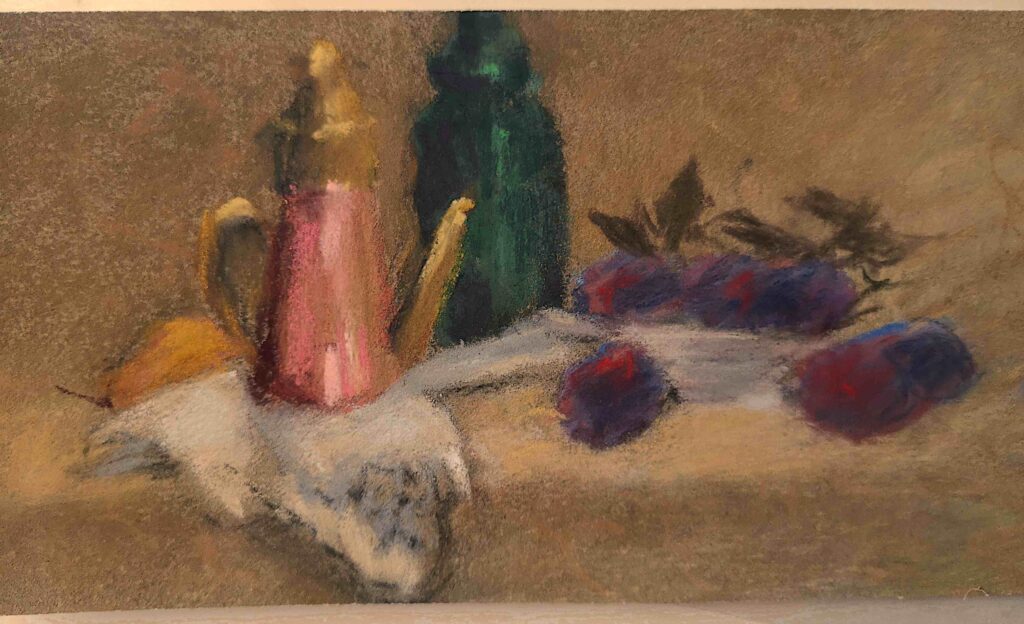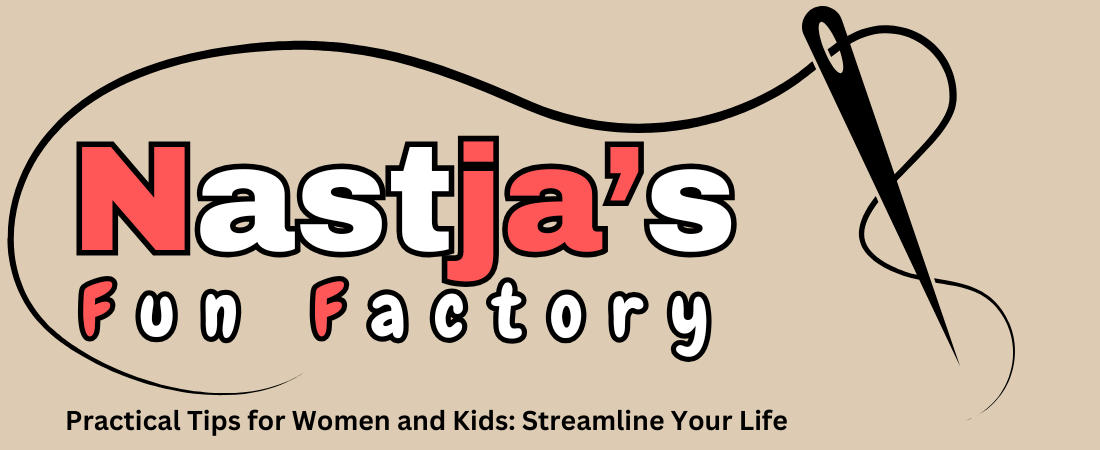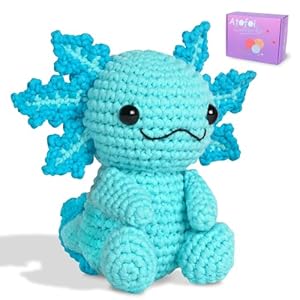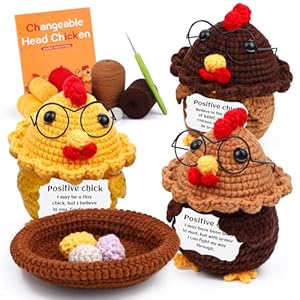
I’m delighted to share the work and words of artist Suzanne Godbout! I’ve been a fan of Suzanne’s work for a looooong time. In fact, I wrote about my admiration for one of her pieces when I would write my monthly roundups.
I’ve always admired her stunning still life paintings and the way they often combine the sheen of a manmade object or two (metal, glass, porcelain) with an organic piece of nature (fruit, a branch, a flower). They follow the tradition of the still life genre and yet move beyond. They are always recognisable as the work of Suzanne Godbout!
Recently, I’ve been enamoured with her colourful and brightly lit pears on the floor!
Here’s a taste:

Before we go on, here’s a wee bit about Suzanne Godbout!
Suzanne Godbout Bio
French Canadian artist Suzanne Godbout, IAPS-MC, MPAC, IAF, PSEC, SCA, taught music for 25 years while she pursued her childhood passion for graphite drawing. The year 1992 brought the desire to work with colour. Beginning with oils, she soon discovered pastels which became her medium of choice. Its fast and direct approach offers a pleasing experience. President of Pastel Society of Easter Canada (PSEC) from 2005 to 2011. Make sure to check out more of Suzanne’s work on her website. (You’ll see her landscapes there.)
And now, over to Suzanne!
+++++
Although I was first attracted to portraiture in my youth, my work now focuses mainly on landscapes and still lifes. Landscape painting offers me a greater opportunity for interpretation and improvisation in the composition as well as the freedom to play with colour, drawing, texture, and personal touch. When painting the landscape, I am interpreting a particular view of nature observed at a distance. I’m painting a miniature size sky or tree for example. There is no proximity.
My still lifes, which are the focus of this guest post, are always painted from life and are close to life-size. Like a portrait, a still life demands a more rigorous technique and accurate drawing. It allows me to indulge in my first passion: observational drawing. I take the greatest pleasure in drawing from life. Nothing compares to working directly from observation in three dimensions. Plus, it’s a sure way of avoiding photo-like reproduction.

Any photo reference of my setups that I would be able to take (at my level of technical ability anyway…) would never reveal the subtleties in lights, shadows, and colour temperatures, particularly when working with metalware and shiny objects. It would take me hours and I would rather spend them painting!
When painting from life, it takes some time before you start noticing all of the colour nuances that are not perceptible at first glance.
After 30 minutes into my charcoal drawing, when I work on subtle values that create the volume, my brain starts figuring out the colour family, temperature and the chroma of the different surfaces. This thinking seeps into my memory and when I get to painting the colour version, I’ve already done half of the work.
My goal is to express intimacy with my subject, so capturing the subtleties and nuances of a shape or the light and shadow pattern of an object is key to success for me.

Inspiration
Still lifes call for a great deal of imagination and creativity in the process of setting up objects of organic and non-organic nature. While being descriptive, it does also reflect a personality trait of the author. For example, I am often told that my still lifes are impressive in the realistic rendering of objects, but at the same time, soft, delicate and emotional. When looked at up close, they are rather loose and soft on edges and contrast. An illusion of realism. So yes, I’m a perfectionist type of person who will check out and select details that matter, but it all has to project a natural look. It has to convey the feeling of beauty I get. I’m trying to move rather than impress the viewer.

My paintings always start with a concept, an inspiring idea, something that has been fermenting in my mind’s eye for some time. The sparkle can come from a particular object, colour scheme, composition, theme, format, lighting, texture, etc. Of course, elements that compose my arrangements revolve around favourite things that I never get tired of painting, mostly because they challenge my skills and creativity.

Working With Tableware
Over the years, I’ve accumulated a lot of antique dinnerware made of porcelain, glass, and all metals from copper to tin. Some are family treasures that have witnessed family gatherings and carry stories. In my paintings, they stand for traditional values and long-lasting stability in a turbulent world. I especially like the way they reflect light and surrounding colours.

I feel a special attraction to grey metals like that in old silverware. But I want to balance these strong neutral shapes by bringing in organic short-lived elements that bring a joyful living presence. They add an impromptu ‘here and now’ factor with their bright colours, fragrances, flavours, and imperfections.
My Guidelines For Setting Up a Still Life
Students wanting to learn the savoir-faire have led me to identify some guidelines for setting up a still life arrangement. These are not strict rules but rather helping tools that will ensure a solid classical composition. Like learning musical scales and chords, these skills can lead you all the way to improvisation.
Choosing elements
The key word here is ‘variety.’ Objects of different sizes (heights, widths), different shapes (square, sphere, cone), different values, colours, chroma, textures, temperatures. Busy areas and calm places to rest the eye.

But ‘variety’ needs to be within ‘unity’ – like notes that form a melody, instruments that form an orchestra and the maestro conducts the whole.
Certain strategies can create unity: common background colour showing through, dominant colour or a limited colour scheme, personal touch and mark-making, specific chroma or value level. Choosing a theme would also guide choices in a common direction.

Placing elements
Here the main tools are overlapping and interacting. A negative example – a group portrait taken with a flash, where people didn’t touch each other would look more like a prison line up. Usually, that’s not the feeling you are looking for. You more likely want to create a theatrical scene where the different features interact with each other and help you to tell your story.

Overlapping has the advantage of automatically creating depth in the painting as objects will be on different planes from foreground to background. Also, overlapping automatically creates contact between things.
Interaction can also be achieved with wise placement of shapes guiding the eye from one object to another. A cast shadow touching a neighbour ties them together. Colour reflecting on another element, a stem directing the eye towards an object, or colour echoes help to develop a dialogue.

Movement, light, and edges
You should include verticals and horizontals for stability, curves for fantasy, and diagonals for movement. Avoiding dead centre placement of a significant element will help initiate asymmetry which is more often a matter of left and right. Working with the golden proportion ensures balanced asymmetry. Asymmetry ensures movement. At this point, trying different lighting orientations will offer some new opportunities to create interaction and your instinct might get you moving things around until they feel in place.

When I can find nothing more to add or change, I do a full-size charcoal sketch to see if the composition is working and to confirm my format choice. That is when I can work on the edges of each mass of value. Hard edges will help bring attention to the focal point while soft edges will do the opposite.

If my eyes dance around, if it feels like music to my heart even before introducing colour, it will have a better chance to resonate with viewers. I am satisfied when I feel the composition reaches my unconscious memory and leaves me floating in a dreamy state.
Doing colour studies
While choosing different elements for a set up, instinctively, the colour relation will be considered. When the composition is pleasing, choosing a specific colour scheme will help to pull the whole together, so sometimes adjusting a colour will do the trick.
For example, if the colour scheme tends towards a split complementary combination, adjusting one of the colours might be needed to make the harmony work, maybe cooler or warmer.
I also make sure to have uneven proportions (around a 60, 30, 10% ratio) in value masses as in colour masses. Colour studies also help me choose the paper colour and brand.



2x2in
Considering the chroma is important. Not every actor has a leading role. A hierarchy is needed and also a good counterpoint to the dominating element. That can be the negative space or the background. That’s why small colour studies are extremely useful. Having the overall colour mood of the piece is almost like having a recipe, a direction to follow.
The Process for “Fitting In”
I wanted to build a simple setup around my favourite silver bowl and have some draping falling over the edge, so the vertical format seemed obvious.
Choosing the plums determined the dominant cool colour and low value and chroma. A yellow pear would be perfect to contrast the cool bluish darks and was placed in the bowl in echo to the cloth’s light value. While doing so, I realized the setup was telling a story here: a pear trying to fit among plums, hum…
The yellow pear determined the warm paper choice that would show through the whole painting and create a temperature balance and unity. Here, I chose a burnt sienna tinted piece of UART paper (18 x 12 in).
The red in the plums, echoed in the background, completed the primary triad. These three colours were used in the bowl and cloth as lights, shadows, and transition colours.
Positioning the cloth was key to carrying the eye through the painting. The folds were forming diagonals leading the eye towards the plum on the table, its crease leading to the pear, the pear’s stem leading back to the plums, then to the bowl’s reflections taking us back to the cloth.
The execution went well as timing forced me to stay loose with my touch and edges while rendering a credible realism.

My Process for “Under Different Lights”
As I was consciously choosing pears in the fruit stall, a family portrait came to mind. Each member has its personality and its own place.
Back to the studio, I started staging them and saw that seven similar shapes wouldn’t portray what I had in mind in a classical setup.
I put them on the floor in positions that would create interaction and reveal each one’s role. I started playing with several light sources which added more movement for the eyes. The long cast shadows were overlapping, tying the family together and telling my story. They connect and create a pattern guiding the eye throughout the painting. Colourwise, I chose a primary triad with a strong warm-cool contrast, and bold mark-making is adding an interesting texture.

My Process for “Apple Jelly”
In this painting the sugar bowl was the inspiration so it would have a prestigious role in this scene. Other elements would need to showcase its character. Jelly came to mind as I saw a branch of crabapples.
The red called for a green so I was happy to include my favourite green vase adding some height and dark contrast. I looked for a jelly jar that was lower than the sugar bowl and would allow for a significant amount of red to reflect on the bowl. I used the branch to direct the eye towards the star of the show and the spoon to lead into the painting. The jar in the back has a supporting role needed to create depth.
You can follow the height scale from the top to the bottom, the different widths from large to small, and different planes from front to back. The greenish background creates unity and balance between warm and cool, bright and dull colours. I thought this composition was working well as it awakened my memory of smell and taste.

~~~~~
Ahhhhhhh, isn’t that something? Can’t you just reach out and feel the softness of a peach, the hardness of metal, the smooth skin of a plum? Everything feels real enough to pluck from the painting and yet, Suzanne Godbout has painted them in a way that speaks to the medium of pastel – it’s softness, its versatility, it’s colour.
We’d love to know what you think! Was this helpful? Did any painting in particular inspire you to get setting up and painting a still life? Were you surprised by anything? Let us know by leaving a comment!
Until next time!
~ Gail
Trending Products















